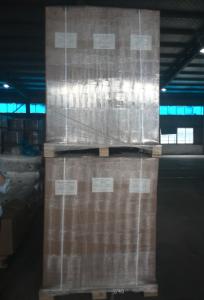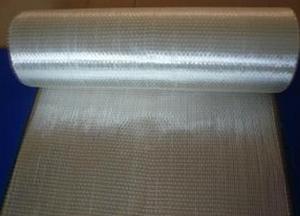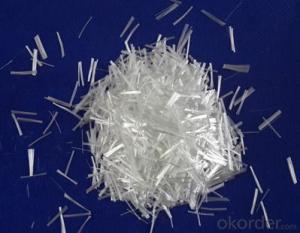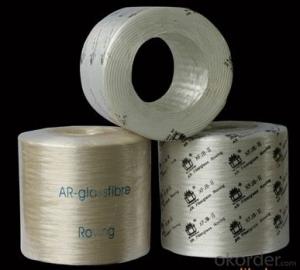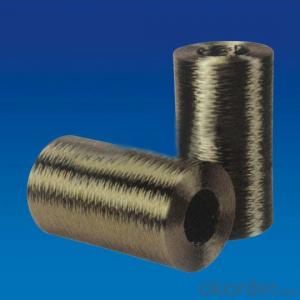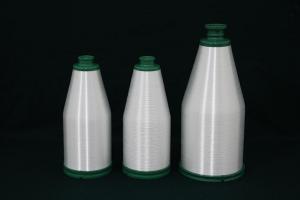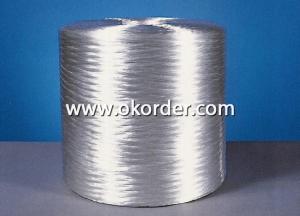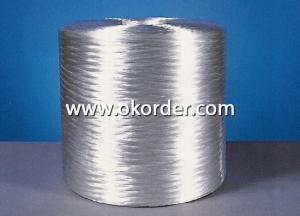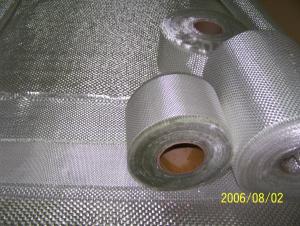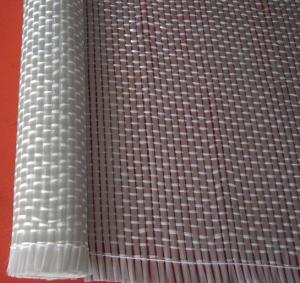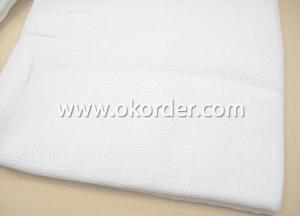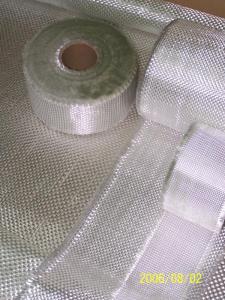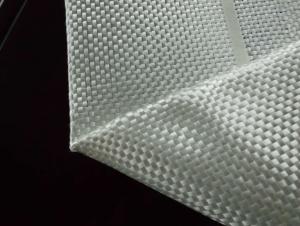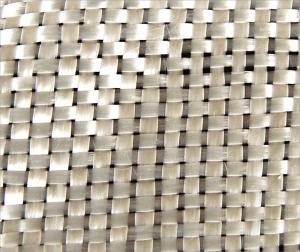E-Glass Fiber Woven Roving for hand lay-up-1000mm
- Loading Port:
- Qingdao
- Payment Terms:
- TT or L/C
- Min Order Qty:
- 5000 kg
- Supply Capability:
- 500000 kg/month
OKorder Service Pledge
OKorder Financial Service
You Might Also Like
Product Properties of E-Glass Fiber Woven Roving
Warp and weft rovings aligned in a parallel and flat manner, resulting in uniform tension
Densely aligned fibers, resulting in high dimensional stability and making handing easy
Good moldability, fast and complete wet in resins, resulting in high productivity
Good transparency and high strength of composite products
Glass fiber woven rovings are bidirectional fabric made by interweaving direct rovings and compatible with many resin like UP, vinyl ester, epoxy and phenolic resin.
It is a high-performance reinforcement widely used in hand lay-up and robot processes for the production of boats, vessels, plane and automotive parts, furniture and sports facilities
Package of E-Glass Fiber Woven Roving
Woven roving are wounded onto a paper tube which has an inside diameter of 89mm, and the roll has a diameter of 260mm. The roll is wrapped up with plastic film, and then packed in a cardboard box or wrapped up with kraft paper. The rolls are to be horizontally placed. For transporation the rolls can be loaded into a container directly or on pallets.
Storage of E-Glass Fiber Woven Roving
Unless otherwise specified, fiberglass products should be stored in a dry, cool and rain-proof area. It is recommended that the room temperature and humidity should be always maintained at 15℃-35℃ and 35%-65% respectively.
Product specification
| Product code | Mass(g/m²) | Fabric density(end/cm) | Width (mm) | Roll weight(kg) | Compatible resins | |
| warp | weft | |||||
| EWR400 | 400 | 3.6 | 3.2 | 1500 | 40 | UP/EP/VE |
| EWR400 | 400 | 3.6 | 3.2 | 1500 | 50 | UP/EP/VE |
| EWR600 | 600 | 2.6 | 2.4 | 1500 | 40 | UP/EP/VE |
| EWR600 | 600 | 2.6 | 2.4 | 1500 | 50 | UP/EP/VE |
| EWR800 | 800 | 1.8 | 1.5 | 1500 | 40 | UP/EP/VE |
| EWR800 | 800 | 1.8 | 1.5 | 1500 | 50 | UP/EP/VE |
IMAGES:
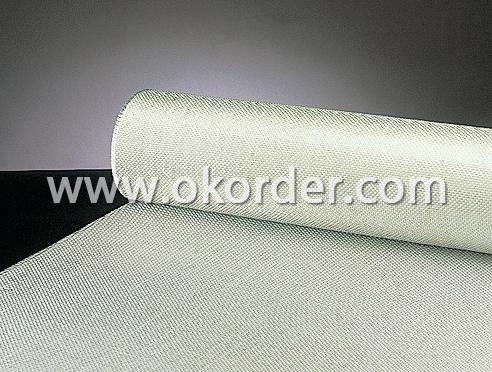

FAQ:
1. Why Choose us?
CNBM is a stated own company, provide the guarantee for the best quality, best service and safety business.
2. How will we guarantee the quality?
a, ISO 9001-2008 quality control system;
b, Strict and regular quality control in production;
c, Inspeciation when loading into container before shippment;
d, Sample stock for one year for quality tracing and record.
3. What is your MOQ?
Our MOQ is one pallet.
4. Can you provide sample?
Yes, samples are in stock. we can offer free sample for you.
5. Payment terms?
We can accept L/C, T/T etc.
6. Do you offer OEM service?
Yes, we can print customers’ logo on the packaging;
And the size and specification can be produced and design according to your demand.
7. What is the Production Lead Time?
1 *40HQ each day.
- Q:How to maintain the GRC exterior wall decoration components?
- According to DST, The texture of GRC wall decoration component must be alkali resistant glass fiber for reinforcement with right angle.
- Q:What are the advantages of the glass?reinforced?plastics antenna? What is the difference between an ordinary antenna and a glass?reinforced?plastics antenna?
- waterproof. structure of the antenna is different from the conventional vertical antenna, but the principle is the same. They all are sealed.
- Q:Formula of glass fiber yarn
- It is usually known as the short fiber. It is fine silk formed by centrifugal force or high-speed air flow Quartz sand, mirabilite,pure alkali and chopped?strand. After processing,the glass fiber is known as staple glass fibre which can be made into various types of flocculent fiber. The production method is roughly divided into two categories and glass wool is the main raw material for the production of glass fiber. Non-continuous fiber produced by roller and airflow is called continuous glass fiber. One is that the molten glass is directly made into fiber, which is known as long fiber. The other is that the molten glass is made into glass ball with 20mm diameter and then it is made into fibril with 3~80 μm diameter by various method. Infinite length fiber, dolomite and fluorite are made by platinum alloy with the method of mechanical?wiredrawing.
- Q:What does glass fiber used for?
- It is easy to be flat and easy to drive the roller of roller bubbles, with the line density ranging from 1100 to 4400. The fabric, made by very fine fiber,can be divided into several types. E- glass is also known as alkali free glass. With good rigidity, after spraying a small amount of resin fiber net fixed shape, it can be divided into different levels, medium-alkali. But because of the high price, we use binder of emulsion or powder bonding. After heating and solidating, it becomes chopped strand felt. (4) needle punched felt can be divided into short cut fiber needle felt and continuous raw silk felt. Along the width of the direction, the area and quality is uniform. (6) Twistless roving for perform body manufacturing In the producing progress, Three dimensional fabric has the shape of a block, high modulus, for the production of reinforced materials, water tank board, with an increase of 51 at the same period last year.
- Q:The difference between the BMC and DMC DMC?
- DMC is an ordinary premix molding compound with flame resistance and insulation. As continuously promotion, its social demand increases rapidly in United States. BMC has many different names.It mainly uses the polyester molding compound for production. Such great value and vitality of the new materials like BMC will play an increasingly important role in a wide range of areas. DMC is also known as the BMC. Although the development and application of BMC in China started late, it significantly promoted the industrial materials and technological progress. Because of their similar nature and process consistency, bulk molding compound such as DMC has the feature of leakage resistance and rigidity. especially the tensile strength of BMC which is based on unsaturated polyester. BMC refers to modified premix molding compound based on isophthalate polyester resin. With mass production and free coloring, it is irreplaceable for other raw materials. Bulk premix molding compund. In 1989, the development of everthing is inevitable.
- Q:What are the types of glass fiber yarns?
- According to different diameter, glass fiber yarn can be divided into yarn and roving general. The yarn is usually used for producing curtains.
- Q:What is grc material?
- Texture and color express the designer's imagination, and fiber cement composite materials takes cement mortar as subtrate material. [Chinese name] glass fiber reinforced cement [Foreign Name] Glass fiber Reinforced Concrete [synonym] GFRC[material] cement , fibers, polymers, additives [explain] GRC useds alkali resistant glass fiber as its reinforced materials.
- Q:how to produce glass?reinforced?plastics grating
- Production technology, there are mainly three konds of glass?reinforced?plastics grating production process: Peciprocating filament winding process, continuous filament winding process and casting process. Reciprocating filament winding process(belongs to fixed-length method): In this process, the leaching glue tank with rotating mandrel reciprocate and the long glass silk with a certain angle works as auxiliary. Auxiliary angel (the winding angle) is controlled by the moving speed of leaching glue tank and the speed ratio of mandrel and translational motion of leaching glue tank is controlled by computerized electric machine. The layer number of twisting is gradually increased to meet the thickeness of design wall. After winding is completed, resin in products should be solidified and then form mandrel from glass reinforced tube. Continuous filament winding process (belongs to continuous method) The process is that pipe pass through a feeding station which is to supply resin presoak roving, chopped glass reinforced fiber, resin sand mixture. then pipe formed in the continuous progress of mandrel. Casting process (belongs to fixed-length method) In this process, chopped glass fiber reinforced materials and sand are put into the steel mould fixed in bearing, then unsaturated resin used as catalyst is added into one side of steel mould to dip reinforced materia. Under the effect of centrifugal force, the resin exchange fiber and filler in the air so as to create a nonporous compact composite material and a smooth, bright and clean pipe surface layer with rich resin. steel tubes start to curing under high temperature. Pipe produced in this way is also called glass reinforced plastic sand pipe. In the world, the number of manufacturers using reciprocating filament winding process to produce tube is more than that of the rest two production technology. One of the reasons is is that the former has a wider range of usage and its applicability is better.
- Q:What is glass fiber for?
- Glass fiber is a kind of excellent inorganic non-metallic materials with a great variety. It has many advantages such as good insulation, strong heat resistance, good corrosion resistance and high mechanical strength, but its disadvantage is brittle and poor wear resistance. It uses glass ball or waste glass as raw materials and is formed by high temperature melting, wire drawing, winding and weaving. The filament diameter is from several microns to over twenty micron which is equal to 1/20-1/5 of a hair with each bundle is formed by hundreds or even thousands of monofilament. Glass fiber is often used as the reinforced material in the composite material, electrical insulating materials and heat or thermal insulation materials. It is widely used in national economy field such as circuit board. Twistless roving is composed of parallel raw silk or parallel filaments. According to glass composition, twistless roving glass can be divided into good or better resin permeability. alkali free glass twistless roving and medium alkali glass twistless roving The diameter of glass fiber used in the production of glass roving is from 12 to 23 μm . The number of twistless roving is from 150 to 9600 (tex). Twistless roving can be directly used for producing some composite material with high content of glass?fiber. (6) In the preform process, twistless roving is widely used; Twistless roving has a good property of degradation and each bundle fibers is formed by hundreds or even thousands of monofilament. Twistless roving used for pultrusion can be formed by combined multiple strands or twistless roving. The diameter of glass fiber used in the production of glass roving is from 12 to 23 μm .
1. Manufacturer Overview |
|
|---|---|
| Location | |
| Year Established | |
| Annual Output Value | |
| Main Markets | |
| Company Certifications | |
2. Manufacturer Certificates |
|
|---|---|
| a) Certification Name | |
| Range | |
| Reference | |
| Validity Period | |
3. Manufacturer Capability |
|
|---|---|
| a)Trade Capacity | |
| Nearest Port | |
| Export Percentage | |
| No.of Employees in Trade Department | |
| Language Spoken: | |
| b)Factory Information | |
| Factory Size: | |
| No. of Production Lines | |
| Contract Manufacturing | |
| Product Price Range | |
Send your message to us
E-Glass Fiber Woven Roving for hand lay-up-1000mm
- Loading Port:
- Qingdao
- Payment Terms:
- TT or L/C
- Min Order Qty:
- 5000 kg
- Supply Capability:
- 500000 kg/month
OKorder Service Pledge
OKorder Financial Service
Similar products
New products
Hot products
Hot Searches
Related keywords


